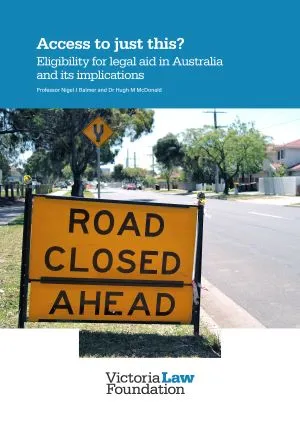Working in Community Legal Centres in Victoria: Building and maintaining a sustainable workforce
Building and sustaining the community legal centre workforce.

Capturing the work of community legal assistance
The Federation of Community Legal Centres Victoria Inc. engaged Victoria Law Foundation to conduct a survey of the community legal assistance sector workforce with the aim of capturing issues, experiences and views of their workforce across diverse roles, centres, and geography.
Build and sustain the community legal centre workforce
This report explores why people come to work at community legal centres, their experiences and career path, their longer-term aspirations and why people leave, and where they are going. The findings shed light on issues and factors affecting workforce sustainability. It provides important evidence to inform initiatives to build and maintain centre sustainability.
This report focuses on how to build and sustain the community legal centre workforce and is the fifth in a series of reports from the Community Legal Centres Workforce Project
Download
Building and sustaining the community legal centre workforce.

Key findings
Strong commitment to community legal centres

The commitment of Survey respondents to their community legal centre was high, with 91.3 per cent proud to tell others where they worked.
Ease of retention

While student, volunteer, board member and many employee roles were relatively easy to fill, lawyer and principal lawyer roles were harder. Turnover varied, with lawyer positions, followed by paralegal, social worker, reception, and policy positions, having quicker turnover.
Issues affecting recruitment and retention

Funding constraints, and an inability to offer permanent, full-time positions, were seen as barriers to both successful recruitment and long-term employee retention. Retention was also related to workplace culture, values and stage of career. Recruiting those from particular cultural backgrounds, and in some locations, was more challenging.
Motivations for working at community legal centres

Respondents joined their current community legal centre from a variety of places. The most common reason for joining was to help those facing disadvantage. Other common reasons included wanting to make justice more accessible and equitable, to have a positive impact, and to work with others who had shared values and purpose.
Career length and future plans

On average, respondents had been employed or volunteered at community legal centres for more than six years. More than 40 per cent had worked for two or more centres. Respondents’ plans to continue working at their current centre were related to whether their contract was ongoing, fixed-term or casual. Two thirds thought there were opportunities to build a career, however some reported low pay, job insecurity and limited funding as constraints on career development.
Leaving community legal centres

More than one-third of respondents were thinking of leaving their current centre. Half of these were actively looking for other work, although many were considering moving to another community legal centre. The most common reason for seeking new employment was career advancement, followed by dissatisfaction with low pay and job insecurity.
Workforce sustainability and funding

The findings demonstrate that the community legal centre workforce is passionate and dedicated. It is committed to improving the lives of the most marginalised members of the community. They provide assistance that is focused and tailored to the needs of the communities they serve. To continue to do this, however, requires more than passion and commitment. To be resilient and sustainable, community legal centres need recognition, respect and funding in line with their critical contribution.
Implications and insights
Frequently asked questions
Publication resources
Similar publications
You may be interested in these other research publications.




.webp)
